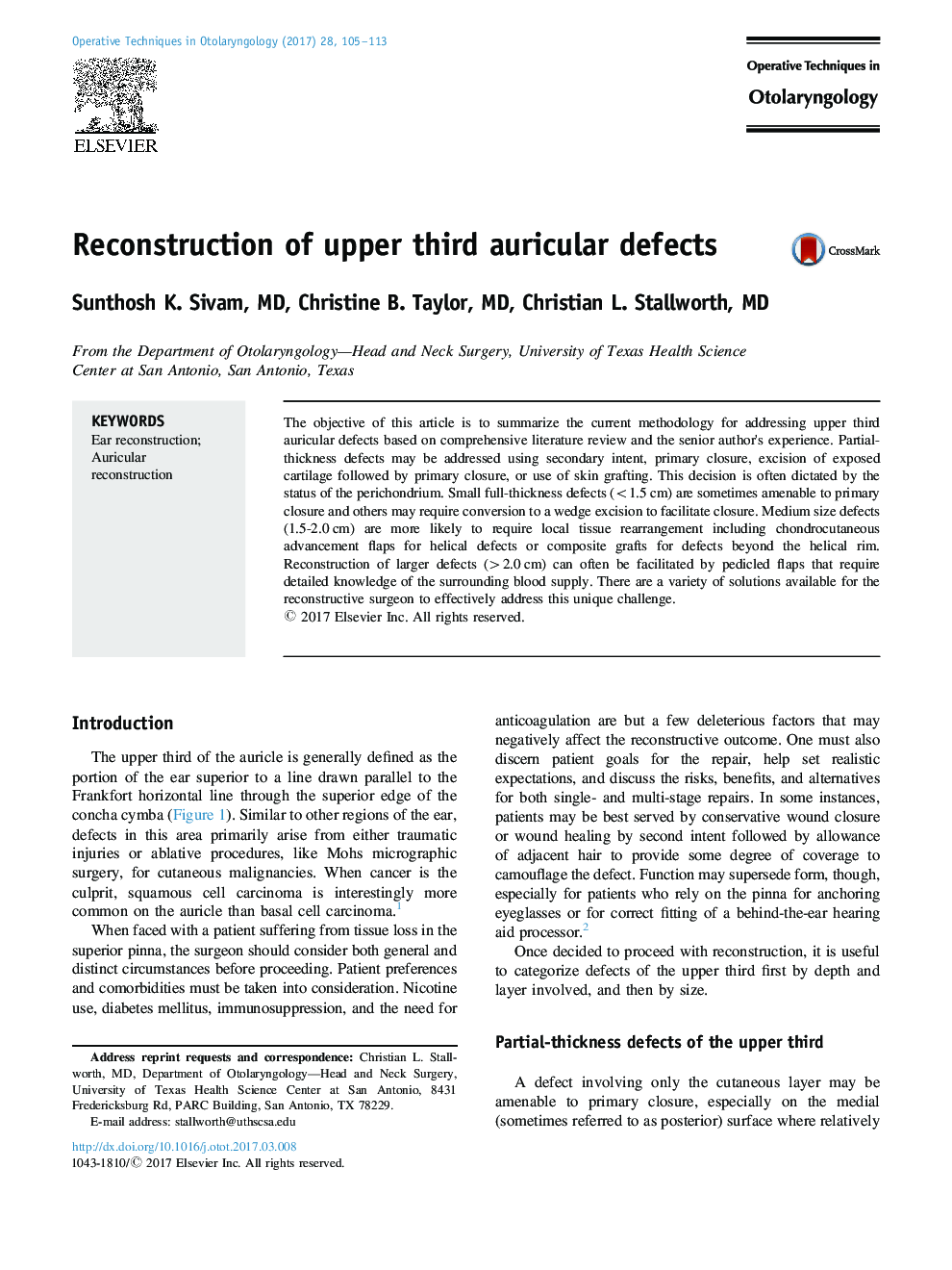| Article ID | Journal | Published Year | Pages | File Type |
|---|---|---|---|---|
| 5715493 | Operative Techniques in Otolaryngology-Head and Neck Surgery | 2017 | 9 Pages |
The objective of this article is to summarize the current methodology for addressing upper third auricular defects based on comprehensive literature review and the senior author׳s experience. Partial-thickness defects may be addressed using secondary intent, primary closure, excision of exposed cartilage followed by primary closure, or use of skin grafting. This decision is often dictated by the status of the perichondrium. Small full-thickness defects (<1.5 cm) are sometimes amenable to primary closure and others may require conversion to a wedge excision to facilitate closure. Medium size defects (1.5-2.0 cm) are more likely to require local tissue rearrangement including chondrocutaneous advancement flaps for helical defects or composite grafts for defects beyond the helical rim. Reconstruction of larger defects (>2.0 cm) can often be facilitated by pedicled flaps that require detailed knowledge of the surrounding blood supply. There are a variety of solutions available for the reconstructive surgeon to effectively address this unique challenge.
